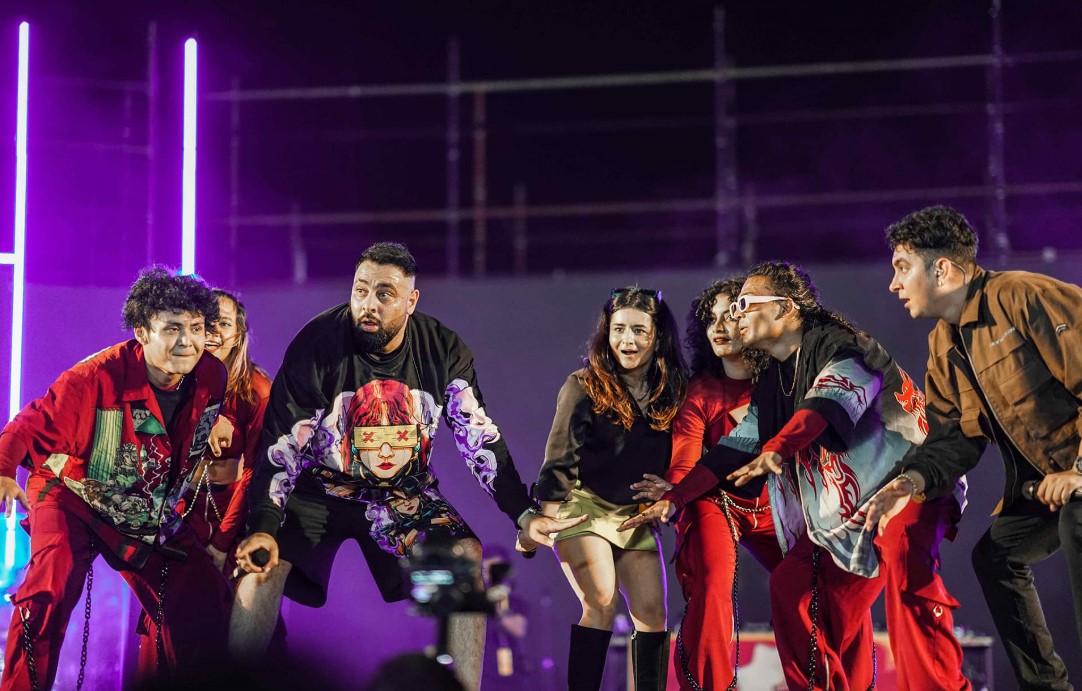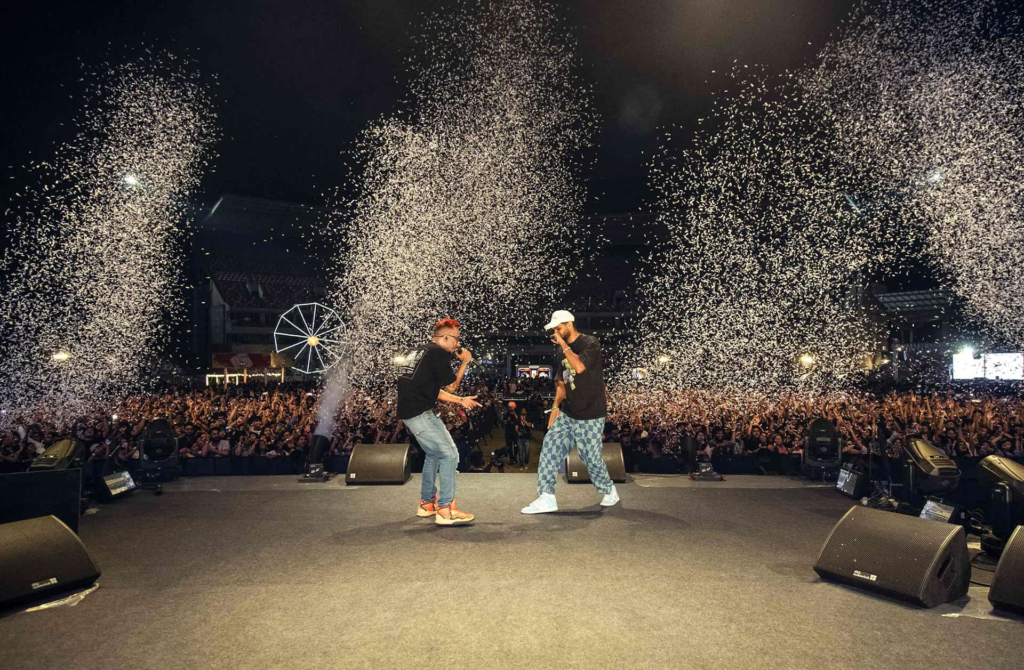Rap vs Hip Hop: Understanding the Difference and Who’s Representing India
When you hear the booming bass, the rhythmic rhymes, and the captivating beats, it’s easy to lump rap and hip...


When you hear the booming bass, the rhythmic rhymes, and the captivating beats, it’s easy to lump rap and hip hop together. For many, the terms are used interchangeably. But did you know there’s a difference between rap and hip hop? While they share the same cultural roots, they are not the same. And speaking of roots and representation, the Indian music scene has witnessed the rise of powerful voices carving a niche for themselves in the global hip hop and rap community. Among the most prominent names are Badshah and Santhanam Srinivasan Iyer, artists who’ve redefined what it means to be an Indian rapper on the world stage.
Let’s dive into the world of rhythm and poetry, and explore not just the art, but also the artists who are making India proud.
The Difference Between Rap and Hip Hop
Though often used synonymously, the difference between rap and hip hop lies in their scope and essence.
Rap is a musical style—a vocal delivery of rhythm and rhymes, often performed over a beat. It’s about lyrical flow, punchlines, storytelling, and often addresses themes ranging from street life to social issues.
Hip Hop, on the other hand, is a culture—a broader movement that includes rap as just one of its elements. Originating from the Bronx in the 1970s, hip hop comprises four main pillars: MCing (rapping), DJing, breakdancing, and graffiti art. It’s a lifestyle, a voice for the marginalized, and an ever-evolving creative expression of identity.
To simplify it: All rappers are part of hip hop, but not all of hip hop is rap. Think of hip hop as the culture, and rap as the language through which a part of that culture is expressed.
Evolution of Rap and Hip Hop in India
The Indian rap scene really began gaining traction in the late 2000s. Regional languages, local slang, and homegrown themes set Indian rap apart. While the West focused on street life in the Bronx or Compton, Indian rappers began rapping about real-life issues—unemployment, inequality, politics, and even love—blending Indian cultural elements with modern beats.
India’s musical identity has always been rich and diverse, but the wave of rap and hip hop has added a new dynamic edge. What once started as underground performances and street cyphers has now become mainstream.
Thanks to social media, streaming platforms, and talent shows, the reach of Indian hip hop has exploded. And at the forefront of this movement are artists who not only rap in multiple languages but also stay authentic to their roots while experimenting with global styles.
Which Rapper is Representing India Today?
You might wonder: Which rapper is representing India on a global scale? Two prominent names come to mind—Badshah and Santhanam Srinivasan Iyer (EPR). Both are redefining Indian rap in their own unique ways.
Badshah – The Mainstream Maestro
Known for his chart-topping hits, Badshah (real name Aditya Prateek Singh Sisodia) has become a household name. His rap style is a fusion of catchy hooks, Punjabi beats, and modern hip hop production. What makes Badshah stand out is his ability to bring rap into Bollywood and the Indian pop music industry without compromising its edge.
While some purists may argue that Badshah’s commercial success leans more toward pop-rap, his journey is undeniably rooted in hip hop. He has shown the country that rap can be both an art and a profitable career. With a massive fan base and record-breaking numbers, Badshah is undeniably one of the most influential rappers representing India in the global arena.
Santhanam Srinivasan Iyer (EPR) – The Conscious Poet
On the other end of the spectrum is Santhanam Srinivasan Iyer, popularly known as EPR (Emcee Poet Rapper). Known for his sharp lyricism, poetic depth, and fearless socio-political commentary, EPR represents the activist voice of Indian hip hop.
A finalist on popular talent shows, EPR isn’t afraid to challenge the status quo. He uses his music as a tool to talk about depression, caste issues, politics, and mental health—topics many artists shy away from. His performances are powerful, moving, and deeply rooted in the original spirit of hip hop: to be the voice of the voiceless.
What sets EPR apart is his commitment to staying authentic. Whether it’s blending Indian classical music with heavy beats or referencing literature and philosophy in his verses, EPR shows the world that Indian rap can be intellectual, emotional, and revolutionary.
Read More – India’s Rap Revolution: How EPR Iyer is Redefining the Voice of a Generation
Why Indian Representation in Rap and Hip Hop Matters

For decades, the global rap and hip hop scene has been dominated by Western voices. But now, artists like Badshah and EPR are proving that Indian voices deserve a place at that table.
They’re not just imitating Western styles—they’re innovating with Indian narratives, multilingual verses, and unique musical elements. Their presence on international platforms opens up new doors for Indian youth who want to express themselves beyond traditional music.
Moreover, this representation helps challenge stereotypes. It breaks the misconception that rap is only about flashy cars and money. Indian rappers show that it can be about struggle, identity, empowerment, and real life.
The Fan Power Behind Indian Rap’s Growth
The rise of Indian rap and hip hop wouldn’t have been possible without its passionate fan base. From YouTube views to streaming playlists, fans play a massive role in shaping the trajectory of artists. Live gigs, online battles, social media shout-outs—Indian fans are among the most engaged and vocal supporters.
Brands and platforms have started recognizing this cultural shift. Events, reality shows, and partnerships are giving rappers new spaces to showcase their talents.
Conclusion: Celebrating Real Talent with Royal Stag Fan
The evolution of rap and hip hop in India is no longer just a trend—it’s a movement. And leading this movement are artists like Badshah and Santhanam Srinivasan Iyer, each representing India in their own distinctive way. Whether it’s Badshah’s genre-defying beats or EPR’s hard-hitting truths, they both reflect the diversity and depth of Indian talent.
But what truly fuels their journey is the passion of fans—the people who stream their music, attend their concerts, and share their verses. Platforms like Royal Stag Fan are playing a crucial role in recognizing and celebrating this real talent. By supporting artists who stay true to their art, Royal Stag Fan is helping shape the future of Indian music—one verse at a time.
So whether you’re a fan of the poetic or the popular, one thing’s for sure—India’s voice in the global rap and hip hop scene is loud, proud, and here to stay.
Read More – The Rise of Santhanam Srinivasan Iyer: The Journey of the Most Popular Rapper in India







